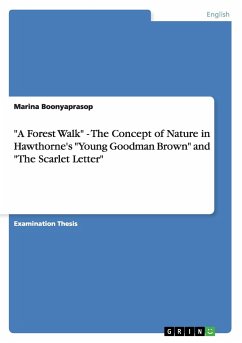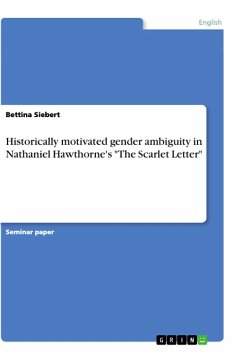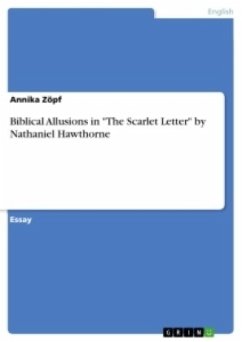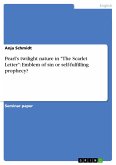Examination Thesis from the year 2010 in the subject American Studies - Literature, grade: 1,0, University of Marburg, language: English, abstract: Nathaniel Hawthorne is one of America's most noted and highly praised writers, and a key figure of US literature. His works have contributed to the national identity and can be found in almost any curriculum of North American Literature Studies worldwide. Being a direct descendant of Massachusetts Bay colonists, the Puritan era of 17th and 18th century New England served as a lifelong preoccupation for Hawthorne and inspired many of his best-known stories. Hence, in order to understand the author and his works, it is crucial to apprehend the historical background from which they arose. Awareness of both the Puritan legacy in Hawthorne's time and their Calvinist beliefs, which contributed to the establishment of American identity, serves as a basis for fathoming the intention behind Hawthorne's writings. His forefathers' concept of wilderness was an important part of their religious life, and in many of Hawthorne's tales, nature can be perceived as an active agent for both plot and moral message. Therefore, it is indispensable to consider the development behind the Puritan perception as well as the prevailing opinion on nature during the writer's lifetime. Seclusion, nature, and Puritanism are constantly recurring topics in both the author's life and works, wherefore particular attention is paid to these. To be familiar with Hawthorne's relation to nature, his ancestors, and religion in general is essential in order to understand the vast amount of symbols that can be found in his stories. The second part of this paper analyzes two of the author's most eminent and esteemed works according to the use of nature symbolism and the underlying moral intention. By depicting various images within "Young Goodman Brown" and The Scarlet Letter, the author examines to which extent they correspond to historical facts and Hawthorne's emphasized characteristic features. The comparison of the two works focuses on the didactic lesson Hawthorne tried to include in all of his works and will thus provide an in-depth understanding of the author's intentions and his utilization of both Puritanism and nature perception.
Bitte wählen Sie Ihr Anliegen aus.
Rechnungen
Retourenschein anfordern
Bestellstatus
Storno








